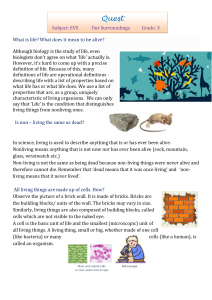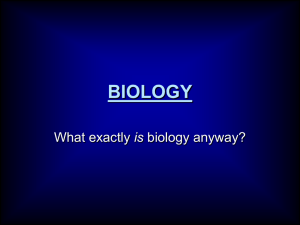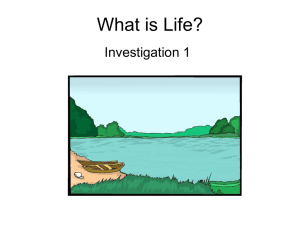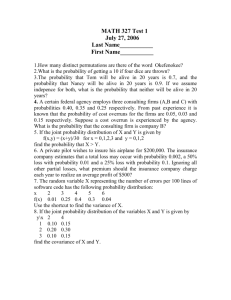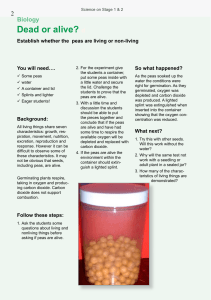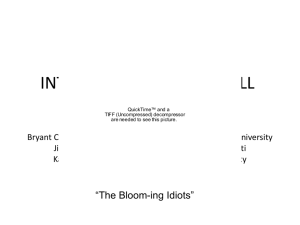Intro to Biology Unit The Characteristics of Life
advertisement
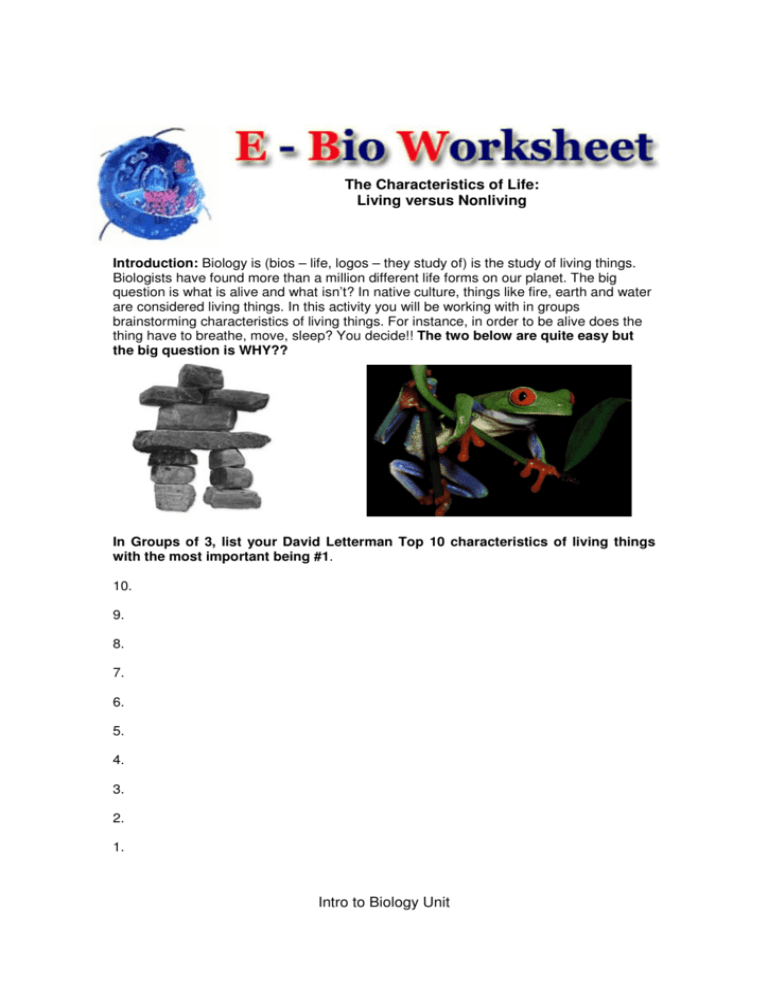
The Characteristics of Life: Living versus Nonliving Introduction: Biology is (bios – life, logos – they study of) is the study of living things. Biologists have found more than a million different life forms on our planet. The big question is what is alive and what isn’t? In native culture, things like fire, earth and water are considered living things. In this activity you will be working with in groups brainstorming characteristics of living things. For instance, in order to be alive does the thing have to breathe, move, sleep? You decide!! The two below are quite easy but the big question is WHY?? In Groups of 3, list your David Letterman Top 10 characteristics of living things with the most important being #1. 10. 9. 8. 7. 6. 5. 4. 3. 2. 1. Intro to Biology Unit Which group does it belong to? Look at the pictures below and decide if each one shows a living thing, a nonliving thing, or a dead one. Also be able to provide one reason for each choice. onions in the garden frog eggs ________________ ______________ _______________ moving car moving insect peas in a packet ________________ a fire ________________ _____________ block of wood _______________ peas in the garden leaf cut from a tree ____________ ______________ Intro to Biology Unit Living, Non-Living or Dead? Introduction The picture opposite shows some living and non-living things in a pond. The fish and the plants are living things. The pebbles and mud at the bottom are non-living. The pond may also hold some dead plants and animals. They were once alive but now are not. What ‘living’ means All living things have the following characteristics: 1 2 3 4 5 6 7 8 9 10 11 Nutrition – plants use light energy to make their food; animals eat plants or other animals for food. Respiration – living things take in oxygen and use it to produce energy; animals take in oxygen by breathing. Excretion – living things give out materials they don’t need, e.g. in sweat or urine. Reproduction – all living things can produce young like themselves. Growth – living things get bigger as they grow older. Sensation – living things can react to changes around them, like sounds, light, and so on. Movement – most animals can move easily; plants can also move, e.g. they can grow towards light. Transport – living things must move things in a liquid inside a cell or inside the organism Secretion – some organisms release specialized substances such as oils, hormones, beeswax, enzymes Metabolism – the sum of all energy processes to keep the organism alive Regulation – the ability to maintain an internal balance despite changes in the external environment. Intro to Biology Unit
